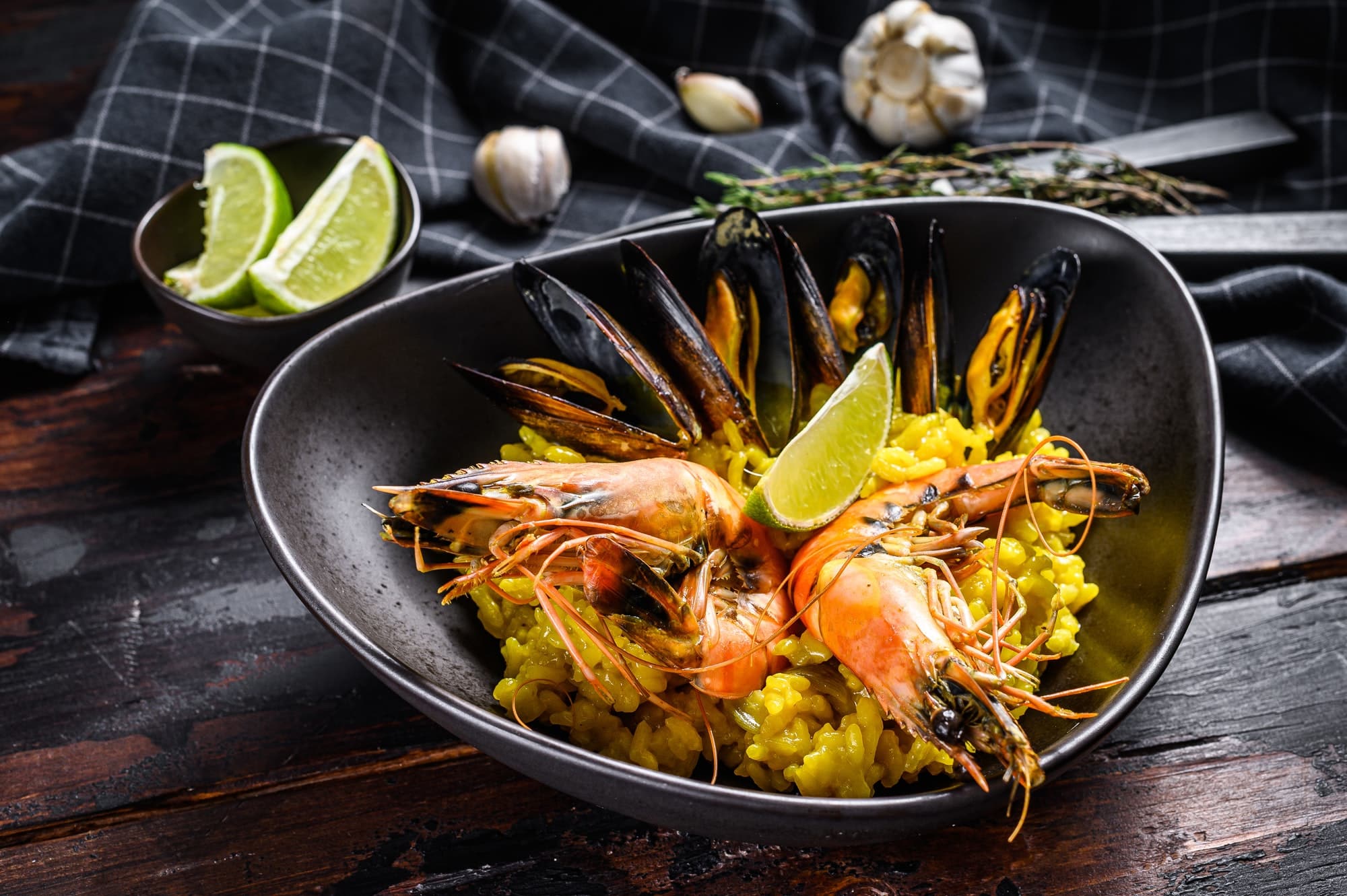What’s the Best Method for Preparing a Delicate and Flavorful Spanish Seafood Paella?

In the heart of Valencia, Spain, the aroma of paella wafts through the air, a delicious symphony of rice, seafood, chicken, and a host of other ingredients sizzling away in a wide, shallow pan. Originating from the Spanish province of Valencia, paella is a vibrant, savory dish brimming with character and history. It’s a meal that is as much about the method of preparation as it is about the ingredients that go into it. Mastering the art of creating the perfect paella is an experience that will immerse you in the culture and culinary traditions of Spain, while also delivering a feast for the senses.
Choosing the Right Ingredients
Creating a tantalizing paella begins with choosing the right ingredients. Traditional Spanish paella is a mixture of rice, saffron, olive oil, chicken, rabbit, beans, and snails, with occasional additions of duck or artichoke. However, this is merely one variant. The beauty of paella lies in its versatility. An assortment of ingredients, including seafood, vegetables, and various types of meat, can be added to customize the dish according to your tastes.
A voir aussi : How to Achieve the Perfectly Balanced Flavors in a Vegan Thai Papaya Salad?
Rice is the backbone of any paella dish. Choose a short-grain variety, which will absorb the flavors of the other ingredients well. The classic choice is Bomba rice, a Spanish variety that maintains its structure even when loaded with broth.
The seafood selection is critical in a seafood paella. Fresh shrimp, mussels, and prawns add a delightful layer of flavor that marries well with the rice.
Cela peut vous intéresser : What are the Best Practices for Making a Flavorful and Heartwarming Gourmet Chicken Noodle Soup?
The final, unmissable ingredient is saffron. This precious spice infuses the paella with its characteristic yellow hue and imparts a unique, slightly bitter taste that is absolutely essential.
The Perfect Paella Pan
The pan you will cook your paella in is just as important as the ingredients that go into it. Paella is traditionally cooked in a ‘paellera’ – a shallow, wide, flat pan with two handles. The design of the pan helps to ensure that the rice cooks evenly and achieves the coveted ‘socarrat’, a layer of caramelized rice at the bottom of the pan that adds a toasty crunch to the dish.
If you don’t have a dedicated paella pan, fear not. A large, flat, and shallow high-sided skillet can also do the job. The key is to have a wide surface area that allows the rice to spread out and cook evenly.
The Paella Cooking Process
Now, let’s move on to the main event – cooking the paella. The process is an art form in itself, and paying attention to the details will make all the difference in the final dish.
Start by heating a generous glug of olive oil in your pan, then add your chicken pieces. Cook until golden brown, then add your choice of vegetables. Once everything is well sautéed, it’s time to add the rice. Coat the grains well in the oil, allowing it to absorb all the flavors in the pan.
Next, pour in your broth. Traditional paella recipes call for a homemade stock, usually made with the shells of the seafood used in the dish, but a good quality store-bought broth can also work. Bring to a simmer, then add the saffron.
As for the seafood, add it in the last 15-20 minutes of cooking to ensure it doesn’t overcook. Shrimp, mussels, and any firm fish cut into chunks work perfectly.
Timing is Everything
Patience is the secret ingredient in paella. Once the broth is added to the rice, resist the urge to stir. Constant stirring releases the starches in the rice, leading to a creamy consistency, which we want to avoid in paella. We are after separate, fully cooked grains of rice infused with all the flavors of the dish.
Cook the paella on medium heat for about 10 minutes, then lower the heat and cook for an additional 10 minutes, or until the rice is nearly done. Add the seafood, pressing it into the rice, and cook until thoroughly cooked through, usually about 10 additional minutes.
And there you have it – a delicate, flavorful, Spanish Seafood Paella prepared with the utmost care and attention to authenticity and detail. Don’t rush the process, savor each step, and most of all, enjoy your culinary journey to Spain. It’s more than just a dish; it’s a cultural experience right in your kitchen.
Adding the Final Touches
Once you have prepared your seafood paella by carefully selecting your ingredients, choosing the right pan, and adhering to the cooking process, it’s time to add the final touches that will elevate your dish to new heights.
Sprinkle your paella with smoked paprika, a staple in Spanish cuisine, which will add a pleasing smoky flavor and a touch of heat. This spice is a must-have for any traditional paella recipe, and it will give your dish an authentic Spanish flair.
Next, season your paella with salt and pepper. Simple as it might sound, this step is crucial for bringing out the flavors of your ingredients. Remember, the key to a great paella is a balance of flavors – the rich, savory taste of the seafood, the subtle bitterness of the saffron, and the smoky heat of the paprika.
In the spirit of traditional Spanish cooking, consider adding a splash of white wine for an added layer of complexity. This optional addition can lend your dish a subtle acidity that complements the richness of the seafood and the robust flavors of the rice.
Finally, garnish your dish with a sprinkle of fresh herbs for a touch of freshness. Parsley is a classic choice, but feel free to experiment with other options like cilantro or even a pinch of fresh mint.
Conclusion: Enjoying Your Spanish Seafood Paella
After the meticulous preparation and the patient cooking time, your Spanish seafood paella is ready to be savored. As with any rice dish, allow it to rest for a few minutes before serving. This will allow the flavors to meld together and the dish to cool slightly, enhancing your dining experience.
When serving your paella, remember to scrape the bottom of your paella pan to include the socarrat. This caramelized layer of rice is a delectable treat that defines a well-cooked paella.
Creating a traditional Spanish seafood paella is about more than just following a recipe. It’s about embracing the Spanish culture, learning about its rich culinary history, and most importantly, enjoying the process. Whether you are cooking for a special occasion or a casual weekday dinner, the art of cooking paella is bound to impress your guests and transport you to the vibrant streets of Valencia.
Remember, the best seafood paella is one that is crafted with love and patience, combining the freshest of ingredients with traditional Spanish cooking techniques. Bon appétit!
